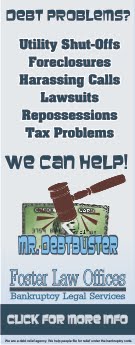(RTTNews) - Swedish automaker Saab Automobile AB (SAAB-B,0GWL.L: News ) could be forced into bankruptcy if fails to pay wages by the end of this week, the Wall Street Journal reported Monday, citing one of the company's labor unions, IF Metall. Saab Automobile is owned by Dutch automaker Swedish Automobile N.V.
According to the WSJ report, a lawyer at IF Metall said that on August 26, Friday, Saab Automobile received requests for payment of 1,486 union members' wages for August.
The cash-starved company has seven days to pay its staff once it receives the requests, failing which, IF Metall could file for a Saab Automobile bankruptcy at the district court. The process will ensure state coverage of wages in the event of the automaker's failure. The union has three weeks to file for a bankruptcy, or its claims will fall.
Saab Automobile was due to pay its blue-collar employees on Thursday, August 25, and its white-collar workers the following day. However, the company said last Tuesday that it may be forced to postpone payments as "committed" funds from investors may not arrive in time. The company also said there could be no assurance that the necessary funding will be obtained or the funds collected.
Unionen, the union for Saab Automobile's white-collar workers, which has about 1,000 members, is now reportedly gathering from its members pay slips that have not been honored, and expects to send requests for payment to the company Tuesday.
August is said to be the third straight month that Saab Automobile has failed to pay wages on time to its approximately 3,600 employees. The company reportedly paid salaries to its workers about a week late in June and July.
Saab Automobile, which has halted production at its Trollhattan plant in Sweden since April this year due to unpaid supplier bills, was seeking to resume production during the week beginning August 29 at the earliest. It has been scrambling for short and medium-term funding to pay suppliers and employees as well as to restart production.
Sweden's Debt Enforcement Agency has reportedly started a collection process on August 16 after Saab Automobile missed a deadline to pay suppliers. More than 100 debt claims are said to have been filed against Saab with the collection agency.
Swedish Automobile, the owner of Saab Automobile, said last Friday that it will publish its financial results for the half year period on August 31 instead of the previously-announced date of August 26. The company said it was still in the process of finalizing the semi-annual report.
On the Stockholm stock exchange, SAAB-B closed Monday's trading at 129.00 Kronor, up 7.00 kronor or 5.74 percent on a volume of 42,377 shares.
Read the entire story here.
The cash-starved company has seven days to pay its staff once it receives the requests, failing which, IF Metall could file for a Saab Automobile bankruptcy at the district court. The process will ensure state coverage of wages in the event of the automaker's failure. The union has three weeks to file for a bankruptcy, or its claims will fall.
Saab Automobile was due to pay its blue-collar employees on Thursday, August 25, and its white-collar workers the following day. However, the company said last Tuesday that it may be forced to postpone payments as "committed" funds from investors may not arrive in time. The company also said there could be no assurance that the necessary funding will be obtained or the funds collected.
Unionen, the union for Saab Automobile's white-collar workers, which has about 1,000 members, is now reportedly gathering from its members pay slips that have not been honored, and expects to send requests for payment to the company Tuesday.
August is said to be the third straight month that Saab Automobile has failed to pay wages on time to its approximately 3,600 employees. The company reportedly paid salaries to its workers about a week late in June and July.
Saab Automobile, which has halted production at its Trollhattan plant in Sweden since April this year due to unpaid supplier bills, was seeking to resume production during the week beginning August 29 at the earliest. It has been scrambling for short and medium-term funding to pay suppliers and employees as well as to restart production.
Sweden's Debt Enforcement Agency has reportedly started a collection process on August 16 after Saab Automobile missed a deadline to pay suppliers. More than 100 debt claims are said to have been filed against Saab with the collection agency.
Swedish Automobile, the owner of Saab Automobile, said last Friday that it will publish its financial results for the half year period on August 31 instead of the previously-announced date of August 26. The company said it was still in the process of finalizing the semi-annual report.
On the Stockholm stock exchange, SAAB-B closed Monday's trading at 129.00 Kronor, up 7.00 kronor or 5.74 percent on a volume of 42,377 shares.
Read the entire story here.

 12:32 PM
12:32 PM
 MrDebtBuster
MrDebtBuster
 Posted in
Posted in



